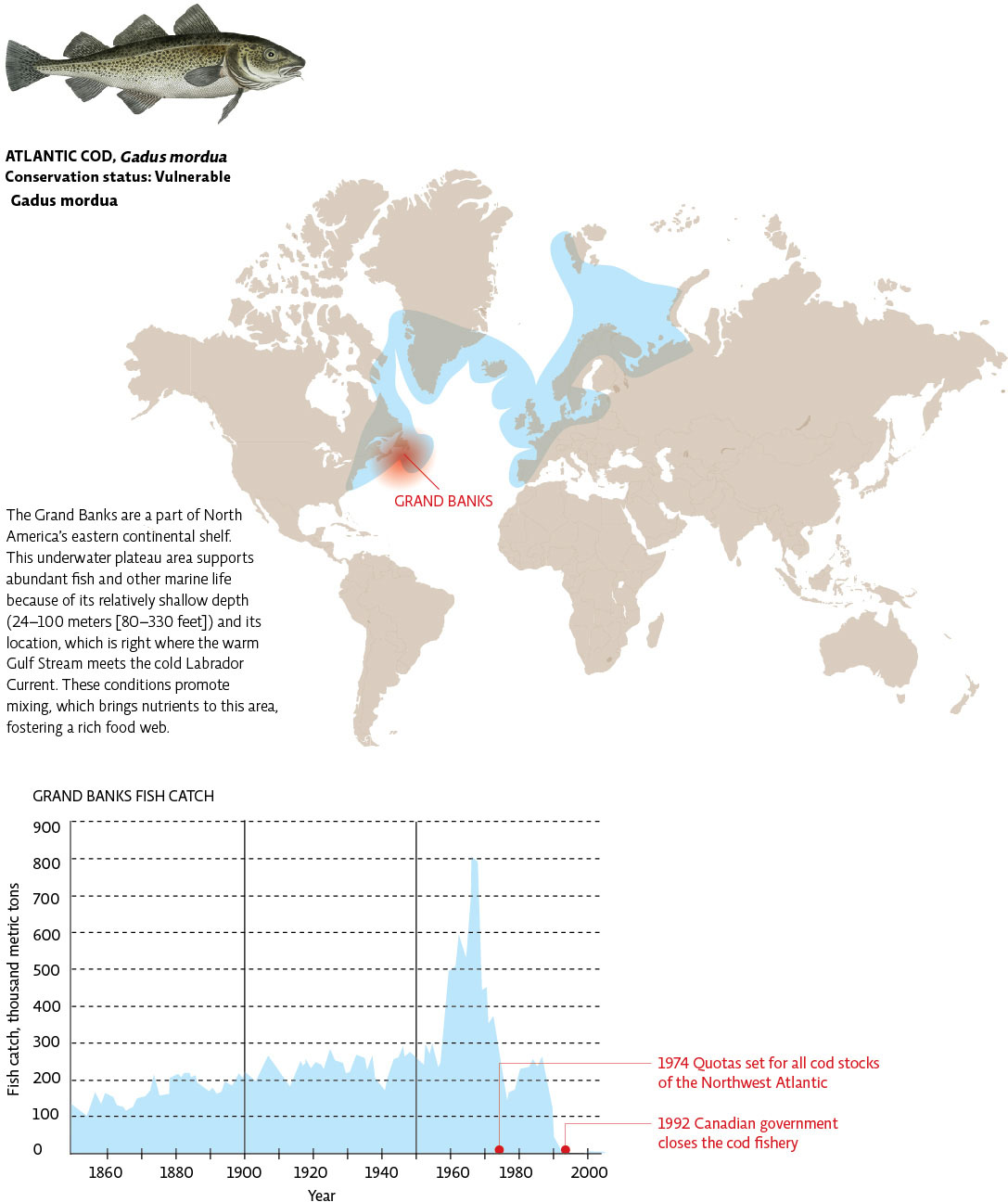Cod are cold-water fish that inhabit coastal waters in the North Atlantic (they are also found in the Pacific). They are usually found in waters 10 to 200 meters deep and live close to the sea floor. Adults eat a wide variety of fish (including other cod) as well as mussels, squid, and crab. Their diet and early life-cycle stages depend on a seabed with a complex structure (lots of hiding places and niches for their prey); therefore, trawling methods that drag a heavy net across the sea floor seriously degrade their habitat and spawning beds. The cod fishery has declined throughout its Atlantic range (blue area), especially in the Grand Banks of the Newfoundland-Labrador Shelf region, where the fishery is seriously depleted

The collapse of the Grand Banks fishery was surprising, considering the biology of this fish. Cod are quite large-an adult can be more than 2 meters (6 feet) long and weigh 90 kilograms (200 pounds) or more. When one considers that spawning schools of more than a hundred million fish have been observed and that the average female can spawn millions of eggs, it is hard to imagine that our fishing practices could devastate this population. And yet, they did.